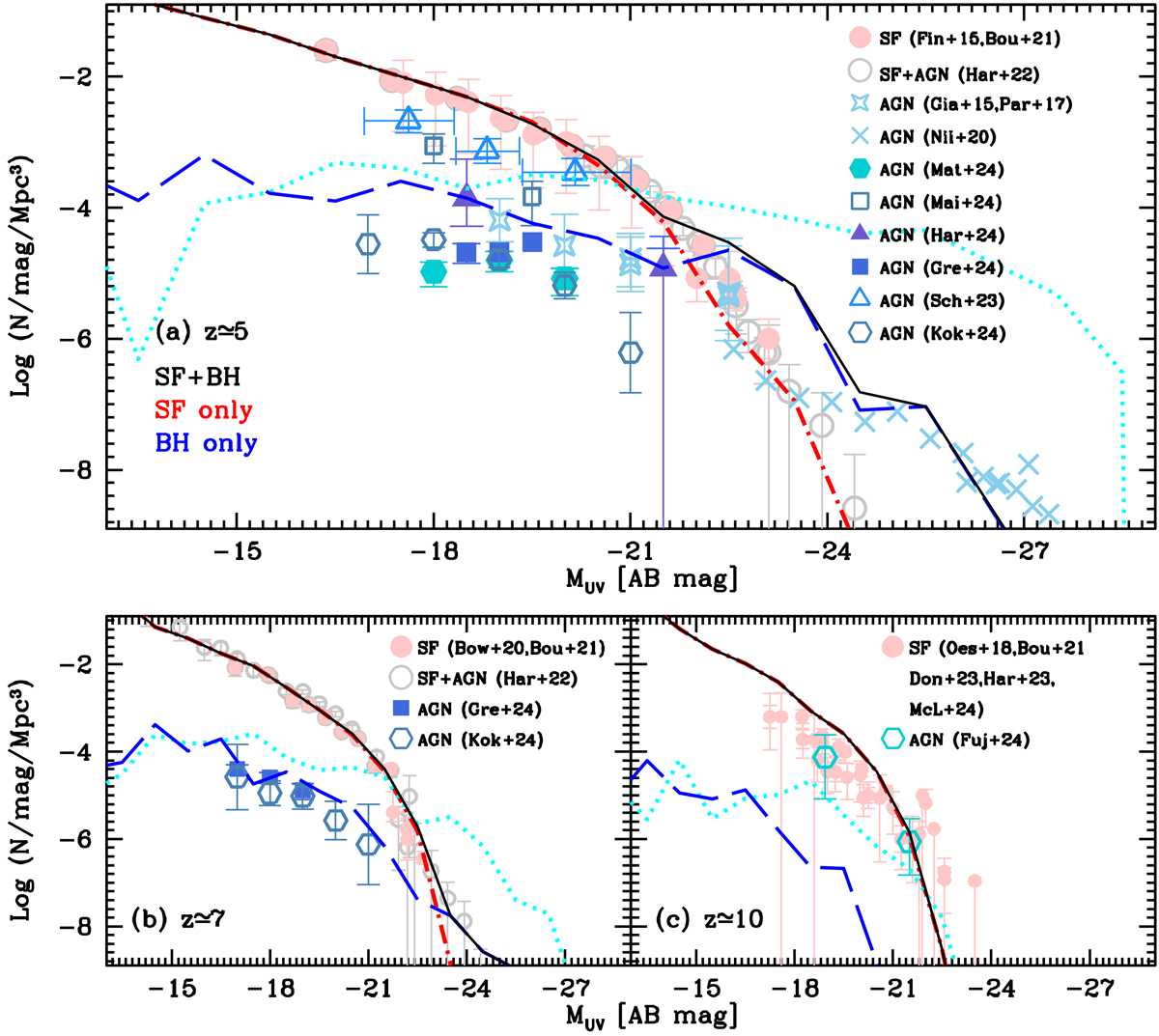Fig. 1.

Download original image
Rest-frame UV LF at z ∼ 5, 7, and 10, as marked. In each panel, the long-dashed, dot-dashed, and solid lines show the dust-obscured UV LF for AGN, star formation, and the total luminosity, as marked; the dotted cyan lines show the intrinsic (i.e., not dust-attenuated) AGN UV LF. In all panels, points show observational results as marked: at z ∼ 5 (panel a), for star-forming galaxies (solid circles, Finkelstein et al. 2015; Bouwens et al. 2021), galaxies+AGN (empty circles, Harikane et al. 2022), AGN (empty stars and crosses, Giallongo et al. 2015; Parsa et al. 2018; Niida et al. 2020), and the new JWST AGN results from Matthee et al. (2024, filled hexagons), Maiolino et al. (2024b, empty squares), Harikane et al. (2024, filled triangles), (empty triangles; Scholtz et al. in prep.), Greene et al. (2024, filled squares) and Kokorev et al. (2024, empty hexagons). At z ∼ 7 (panel b), we show the results for star-forming galaxies (solid circles, Bowler et al. 2020; Bouwens et al. 2021), galaxies+AGN (empty circles, Harikane et al. 2022), and the new JWST AGN results from Greene et al. (2024, filled squares) and Kokorev et al. (2024, empty hexagons). At z ∼ 10 (panel c), we show the UV LF inferred for star-forming galaxies (solid circles, Oesch et al. 2018; Bouwens et al. 2021; Donnan et al. 2023; Harikane et al. 2023a; McLeod et al. 2024). At this redshift, the empty hexagons show AGN candidates (UHZ1 and GN-z11), with the number densities calculated as detailed in Fujimoto et al. (2024).
Current usage metrics show cumulative count of Article Views (full-text article views including HTML views, PDF and ePub downloads, according to the available data) and Abstracts Views on Vision4Press platform.
Data correspond to usage on the plateform after 2015. The current usage metrics is available 48-96 hours after online publication and is updated daily on week days.
Initial download of the metrics may take a while.


